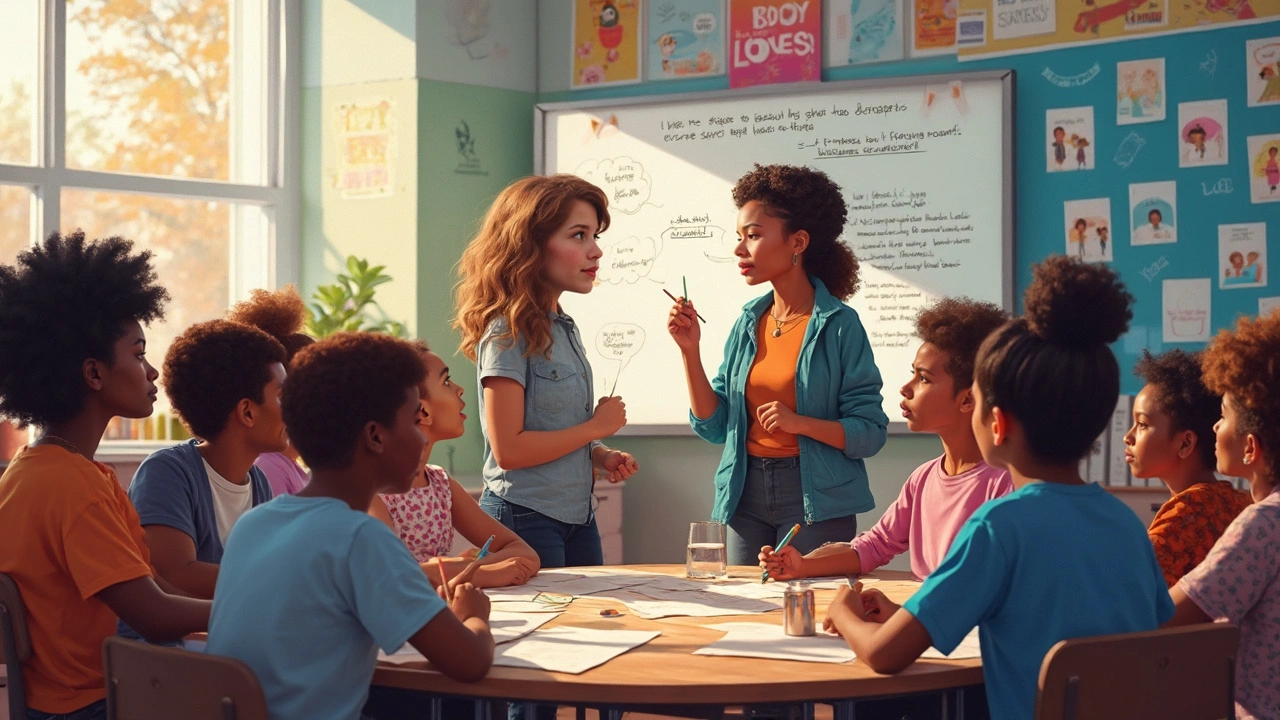Social Issues in High School: Challenges Students Face
High school isn’t just about textbooks and tests—social issues show up in the hallways every day. Students deal with real stuff: pressure to fit in, stress from grades, bullying, and figuring out who they are. Some teens get hit hard by social media drama, others worry about looking cool or fitting in with the right crowd. This stuff isn’t small—it affects grades, mood, and even health.
Mental health is a hot topic for teens right now. Anxiety, depression, and stress are way more common than most people think. According to the CDC, almost 30% of high school students have felt sad or hopeless for weeks at a time. This isn’t just a headline—this is real life for a lot of kids, and schools are scrambling to catch up. Having a supportive friend group, a favorite teacher to talk to, or a safe space in school can make a huge difference. Parents who check in early—not just when trouble hits—help their kids ride out the tough times.
Bullying has gone digital. Mean texts, embarrassing photos, and group chats sometimes stir things up way more than in-person drama. One mean post can follow you into every class. Schools have anti-bullying programs, but it often comes down to students speaking up for each other and parents looking for clues—like changes in mood, grades, or friends.
Peer pressure is another minefield. Sometimes it’s subtle, like feeling pushed to try vaping at a party or copying someone else’s homework to avoid looking stupid. Teens want to belong, so it’s easy to say yes when you want to say no. Having the courage to walk away—or even to just say “not today”—can be tough. Parents who talk honestly (and listen, too) help teens steer clear of stuff they’re not ready for.
Money worries also mess with high school life. Kids whose families struggle to pay for field trips, sports gear, or even lunch can feel left out or judged. Some high schoolers work after class to help their families. Talking about money without shame, and schools offering free or reduced-cost activities, makes a big difference so everyone feels included.
Diversity and inclusion aren’t just buzzwords. Students want to feel seen and safe no matter their background, and schools are getting called out when they fall short. Clubs, events, and open conversations about race, gender, and identity help build respect and understanding—when they’re real and not just a poster on the wall. If you’re a parent or educator, listening to what students say they need is a smart place to start.
Social issues won’t vanish, but talking openly, checking in with each other, and pushing for real change—inside and outside school—are how things get better. Remember: the biggest difference often starts with one person who cares enough to notice.
- Mar, 6 2025

High schools are stepping up to address social issues impacting students and communities. From mental health awareness to diversity programs, schools are finding creative ways to tackle these challenges. This article explores how schools are creating safe and inclusive environments by implementing programs that focus on empathy, communication, and real-world problem-solving skills. Discover innovative strategies schools are using to engage students and make a positive impact. Learn how these efforts are shaping the leaders of tomorrow.
- Read More